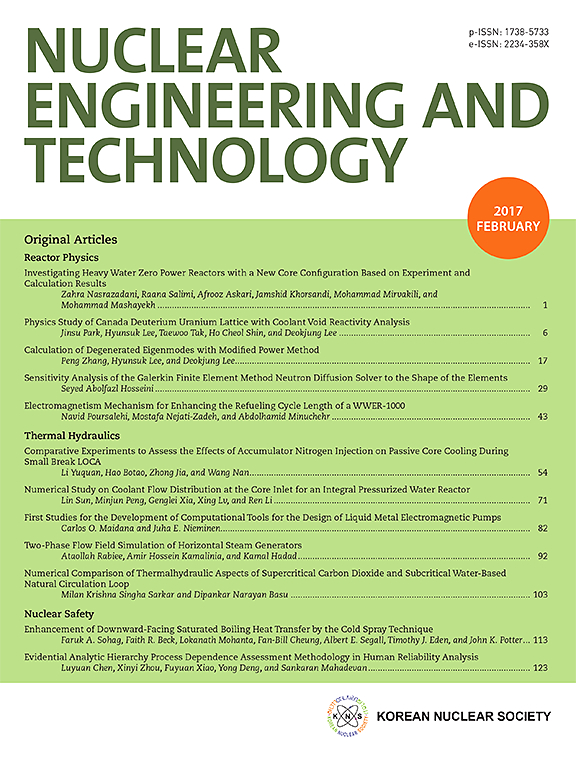The role of small modular reactors (SMRs) in achieving Net-Zero emissions by an approach to climate actions
IF 2.6
3区 工程技术
Q1 NUCLEAR SCIENCE & TECHNOLOGY
引用次数: 0
Abstract
As the energy sector is a major driver of atmospheric change, the solution to reduce CO2 emissions from the combustion of fossil fuels, including oil and coal, is sought in nuclear energy. In this study, we apply the inherent low-carbon emission characteristics of small modular reactors (SMRs) to climate change mitigation. Modeling using the system dynamics (SD) method, a complexity analysis algorithm, shows that the climate mitigation effect in the context of SMR deployment shows a gradual and progressive trajectory over time, which is in contrast to other technologies where the benefits appear particularly abruptly after a certain operational threshold (e.g., 90 months of operation).
The inherent uncertainty associated with carbon-related variables in the Net-Zero World scenario increases variability, as evidenced by the higher standard deviation, where the standard deviation for the Net-Zero World is over 5.0, while that for SMRs is below 1.0. As a result, a society with net-zero carbon emissions must consider significant uncertainties arising from a variety of factors. Small nuclear reactors have the potential to provide a stable and consistent energy supply even under adverse weather conditions, thereby enhancing energy security and grid resilience.
小型模块化反应堆(smr)在通过气候行动方法实现净零排放中的作用
由于能源部门是大气变化的主要驱动因素,减少包括石油和煤炭在内的化石燃料燃烧产生的二氧化碳排放的解决方案是在核能中寻求。在本研究中,我们将小型模块化反应堆(smr)固有的低碳排放特性应用于减缓气候变化。使用系统动力学(SD)方法(一种复杂性分析算法)进行建模表明,在小型反应堆部署的背景下,气候缓解效应随着时间的推移呈现逐渐和渐进的轨迹,这与其他技术形成鲜明对比,后者的效益在某个运行阈值(例如运行90个月)之后特别突然出现。在净零世界情景中,与碳相关变量相关的固有不确定性增加了变异性,正如较高的标准偏差所证明的那样,净零世界的标准偏差超过5.0,而smr的标准偏差低于1.0。因此,一个净零碳排放的社会必须考虑由各种因素引起的重大不确定性。即使在恶劣的天气条件下,小型核反应堆也有可能提供稳定和持续的能源供应,从而增强能源安全和电网的弹性。
本文章由计算机程序翻译,如有差异,请以英文原文为准。
求助全文
约1分钟内获得全文
求助全文
来源期刊

Nuclear Engineering and Technology
工程技术-核科学技术
CiteScore
4.80
自引率
7.40%
发文量
431
审稿时长
3.5 months
期刊介绍:
Nuclear Engineering and Technology (NET), an international journal of the Korean Nuclear Society (KNS), publishes peer-reviewed papers on original research, ideas and developments in all areas of the field of nuclear science and technology. NET bimonthly publishes original articles, reviews, and technical notes. The journal is listed in the Science Citation Index Expanded (SCIE) of Thomson Reuters.
NET covers all fields for peaceful utilization of nuclear energy and radiation as follows:
1) Reactor Physics
2) Thermal Hydraulics
3) Nuclear Safety
4) Nuclear I&C
5) Nuclear Physics, Fusion, and Laser Technology
6) Nuclear Fuel Cycle and Radioactive Waste Management
7) Nuclear Fuel and Reactor Materials
8) Radiation Application
9) Radiation Protection
10) Nuclear Structural Analysis and Plant Management & Maintenance
11) Nuclear Policy, Economics, and Human Resource Development
 求助内容:
求助内容: 应助结果提醒方式:
应助结果提醒方式:


